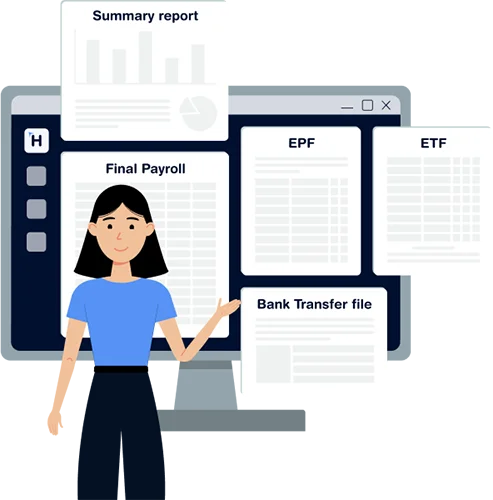Leave tracking may seem like a simple admin task, but for many Sri Lankan SMEs, it’s one of the most common sources of payroll errors, employee frustration, and compliance risk.
When small teams rely on outdated methods like Excel sheets, WhatsApp messages, or verbal approvals, things start falling through the cracks. Days off get missed, entitlements are misunderstood, and approvals aren’t properly documented.
Thankfully, a modern HRIS (Human Resource Information System) can help fix these issues and bring structure to your company’s leave management.
Here are five of the most common mistakes small businesses make, and how the right HR software can solve them.
1. Relying on Verbal or Informal Leave Requests
In many Sri Lankan SMEs, especially those just starting to formalize processes, leave is still requested verbally or via chat apps like WhatsApp. While this might feel quick and convenient, it can create confusion and disputes when there’s no record of the request or approval.
How an HRIS Helps:
An HRIS provides a clear digital workflow for leave requests. Employees can apply for leave through their dashboard, managers get notified to approve or reject, and the system automatically logs every step. No more forgetting who said what, everything is documented.
2. Failing to Update Leave Balances Accurately
Manually updating leave balances every month or year often results in outdated or incorrect numbers. This leads to situations where employees are told they don’t have leave left, when in fact they do, or they’ve been allowed to take too much without knowing it.
How an HRIS Helps:
Your HRIS calculates leave balances automatically based on your company policy. It adds entitlements, deducts used days, and shows real-time balances to both HR and employees. This transparency reduces miscommunication and helps HR stay on top of things.
3. Not Integrating Leave Tracking with Payroll
One of the biggest challenges comes at the end of the month, when approved leave and no-pay days have to be manually deducted from salaries. If the leave records are on paper or a separate system, payroll calculations can easily go wrong.
How an HRIS Helps:
With integrated payroll and leave tracking, your HRIS automatically reflects no-pay leave in salary calculations. This saves time, reduces human error, and ensures your payroll team doesn’t need to cross-check different sources manually.
4. No Visibility into Team Availability
Without a central leave calendar, teams often don’t know when others are on leave. This causes last-minute rescheduling, workload imbalances, or even approval of multiple team members’ leave on the same day, leaving departments understaffed.
How an HRIS Helps:
An HRIS system provides shared visibility into team leave calendars. Managers can see who’s scheduled to be off before approving new requests. This makes planning easier, especially in small teams where every person counts.
5. No Leave Reports for Audit or Analysis
Most SMEs don’t generate monthly or annual leave reports unless specifically requested. But when you need to review leave trends, check compliance, or prepare for audits, scrambling to find scattered records can be stressful and time-consuming.
How an HRIS Helps:
The system can generate detailed leave reports with just a few clicks, by employee, department, or month. These are useful for both internal planning and external audits. They also help you spot trends, like employees overusing sick leave or unused annual leave that might carry forward.
Bringing Order to Leave Management
Managing leave well isn’t just about record-keeping, it’s about fairness, transparency, and efficiency. When employees know their leave is being tracked accurately and approved systematically, they feel more confident and valued.
At the same time, HR and payroll teams benefit from fewer errors, better planning, and more time to focus on meaningful work instead of chasing approvals or updating spreadsheets.
So if your SME is still juggling multiple leave tracking tools or struggling to stay organized, an HRIS could be the system that brings order to the chaos. With digital leave workflows, integrated payroll deductions, and automated reports, it’s a small upgrade that delivers big results.



